Fall at SummerHome Garden, Part 1
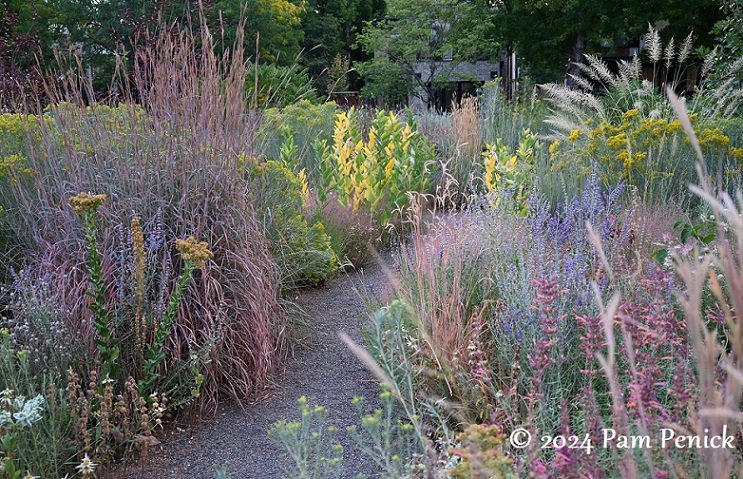
When I told gardening friends I’d be in Denver in late September, many urged me to visit SummerHome Garden. It was already on my list. SummerHome has had glowing media attention since its creation in 2020, and I’d read about it in Visionary and Shrouded in Light. Privately owned yet open to the public, this urban xeriscape in the Washington Park neighborhood offers regular visiting hours. But even better, owner Lisa Negri, the retired owner of an environmental engineering company, generously made time to meet me in the garden and tell me all about it.
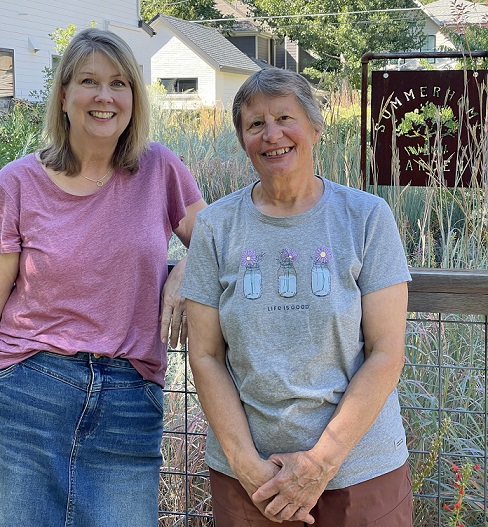
Me with SummerHome owner Lisa Negri
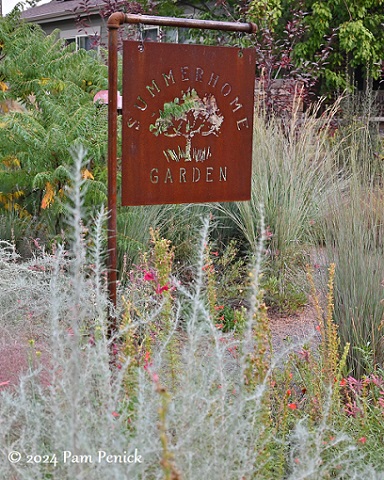
The genesis of the .14-acre garden was frustration. Lisa had watched as 100-year-old bungalows in her urban neighborhood were replaced with boxy 2- or 3-story houses that blocked light and loomed over their neighbors. In 2019, when a run-down bungalow next door became available after its owner died, she quickly bought it off-market to keep it out of the hands of builders. Then she tore it down.
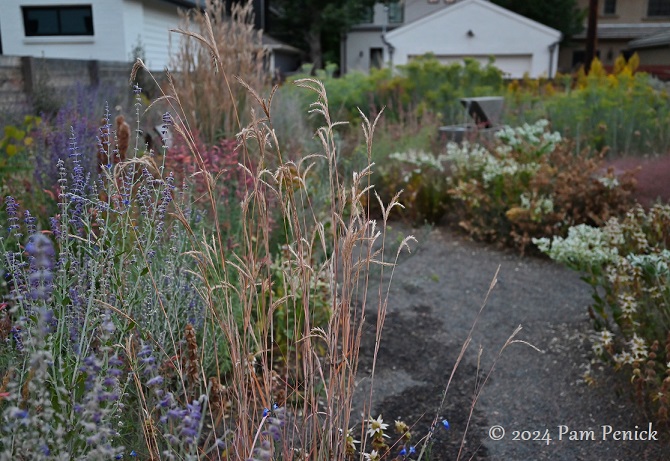
She considered making it into an open lawn where she could let her dogs run around. But she didn’t like the idea of maintaining a big lawn in Denver’s arid climate, where annual precipitation averages just 14 inches. Lisa was volunteering at Denver Botanic Gardens, where she met horticulturist and garden designer Kevin Philip Williams, and they started talking about what the space could be.
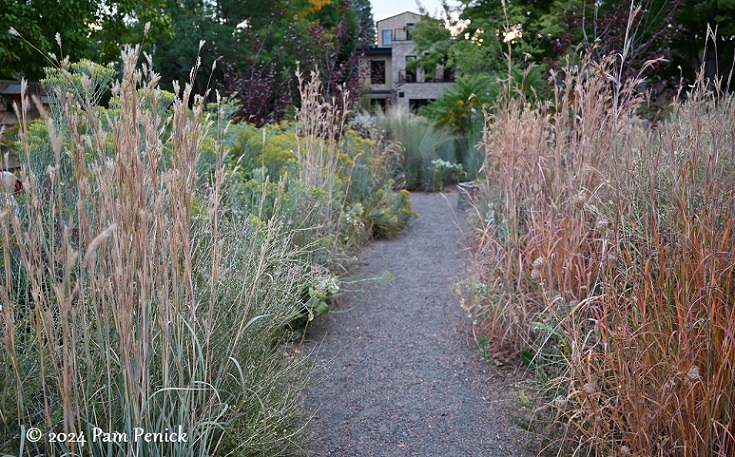
Soon Kevin was designing a waterwise garden suited to Colorado’s steppe climate. (A steppe is a semi-arid grassland with cold winters and warm-to-hot summers.) In 2020, when Denver Botanic Gardens shut down for the pandemic, Lisa harnessed an army of garden volunteers eager to get their hands back in the dirt, and they planted 4,000 plants at SummerHome.
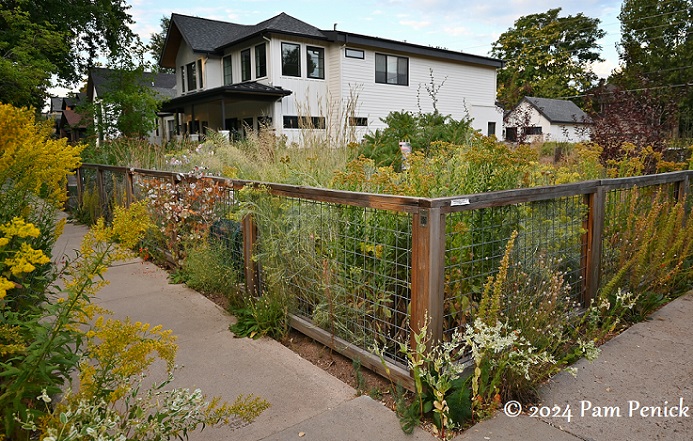
The garden resulting from Lisa and Kevin’s collaboration — which continues to this day — is gorgeous in late September, golden with rabbitbrush and goldenrod, swaying with ‘Undaunted Ruby’ muhly and big bluestem grasses, and alight with colorful agastache, salvia, and standing cypress. But perhaps the most beautiful part of the garden is the intention behind it: Lisa’s desire to make it a pocket park for public use rather than keeping it all to herself.
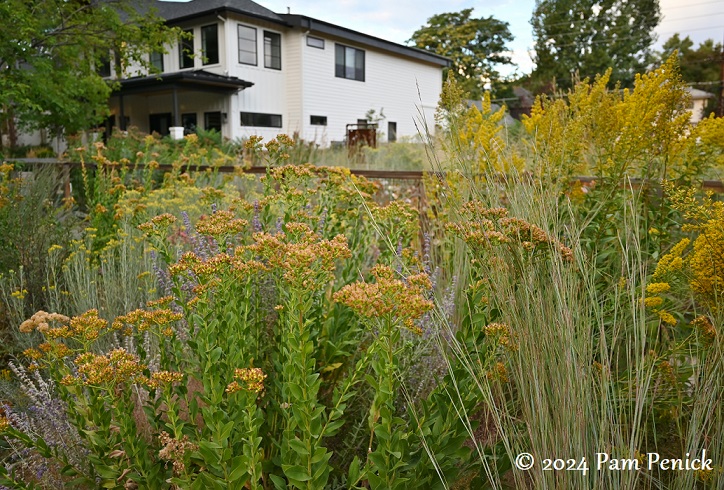
Today, neighbors pop in to walk the garden paths with their dogs or explore for hummingbirds and butterflies with their children. Lisa finds people relaxing in chairs and benches she’s placed throughout the garden. While I was there, a dog owner stopped by with his pup, who lapped a drink from a fountain.
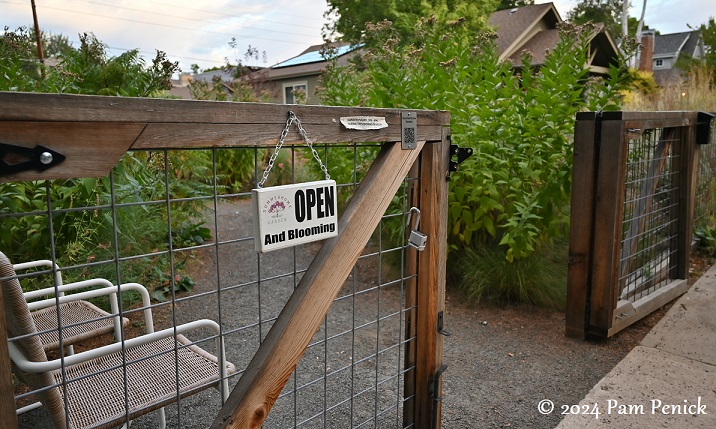
Lisa unlocks the gate each morning, a signal that the garden is open to visitors. At night she closes it up again. The garden remains open to the public from spring bulb season through autumn’s ripeness. After the first hard freeze, Lisa closes it for winter.
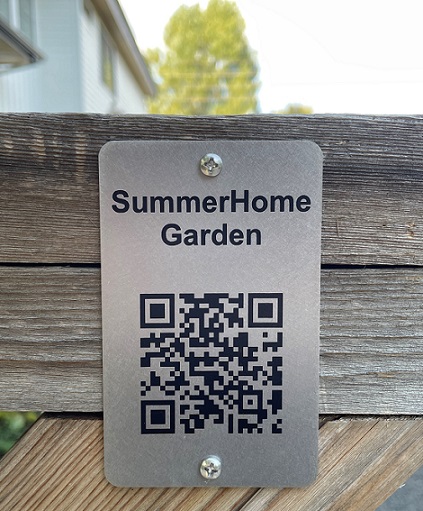
A QR code on the fence links to SummerHome’s website, which includes a plant list. Lisa hopes the garden will inspire others to plant native and adapted waterwise plants, showcasing the beauty and wildlife habitat they offer without need of frequent watering.
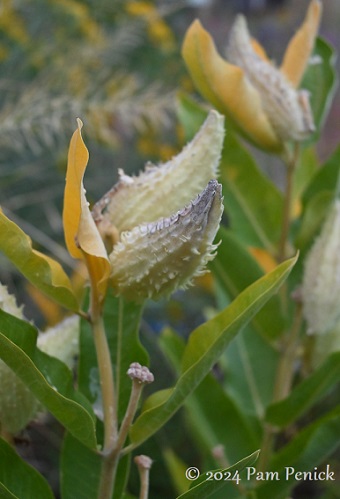
Lisa told me she waters new plants to get them established but otherwise irrigates the entire garden once or twice a year. In an exceptionally hot and dry year like this one, she has watered 4 times. There is no irrigation system. Watering is done by hand or by soaker hoses. She has a gardener who comes once a week to check on things. And volunteer helpers from the community sign up to work in the garden one day each month. The community investment in the garden is inspiring, and Lisa says she could not do it without them.
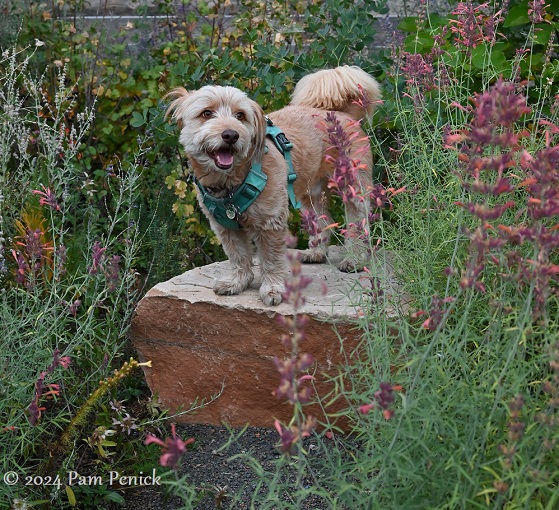
Willy, one of Lisa’s dogs, enjoys the view from a boulder bench.
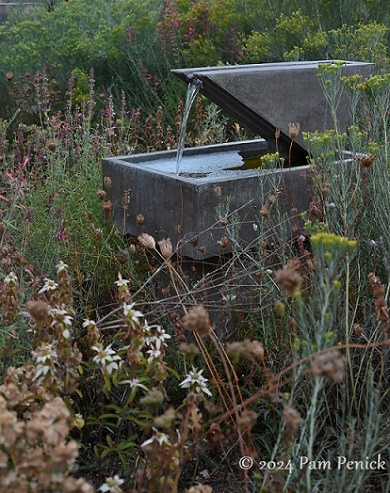
Two fountains run on a timer in the morning and evening, turning off during the heat of midday to conserve water.
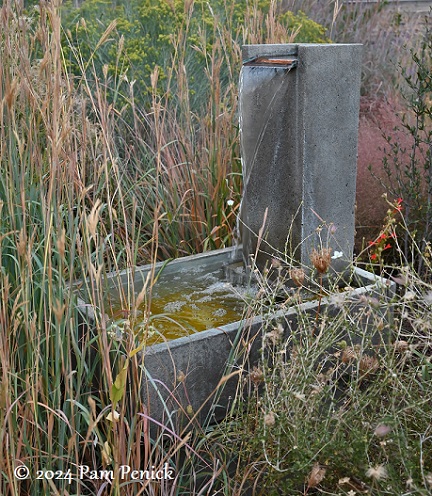
The water attracts birds and other wildlife and adds to the garden’s peaceful ambiance.
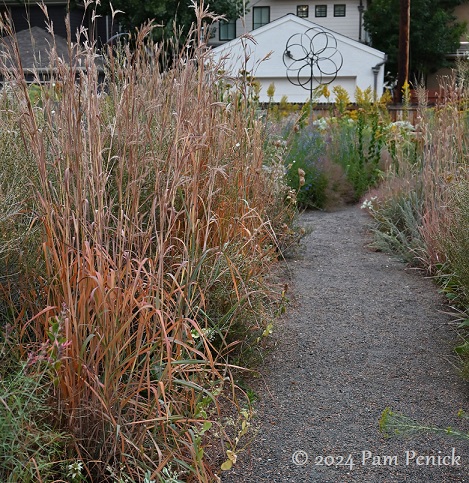
Gravel paths meander through grasses and flowering perennials that stood shoulder high when I visited in late September.
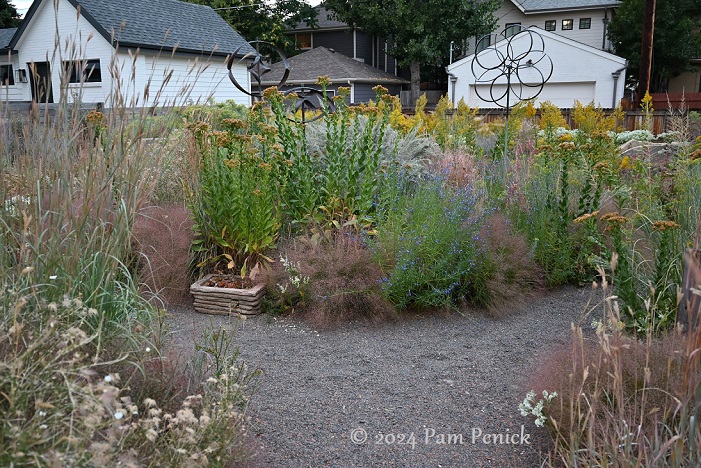
Kinetic sculptures by Lyman Whitaker catch the wind and pull the gaze inward from surrounding structures.
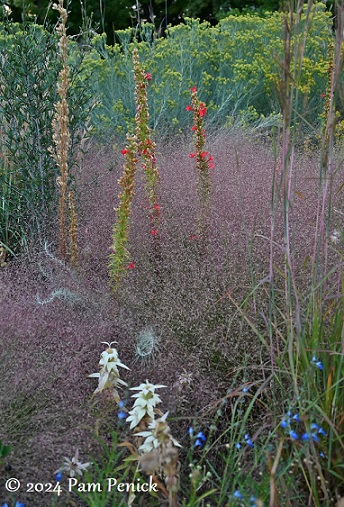
Standing cypress and muhly grass
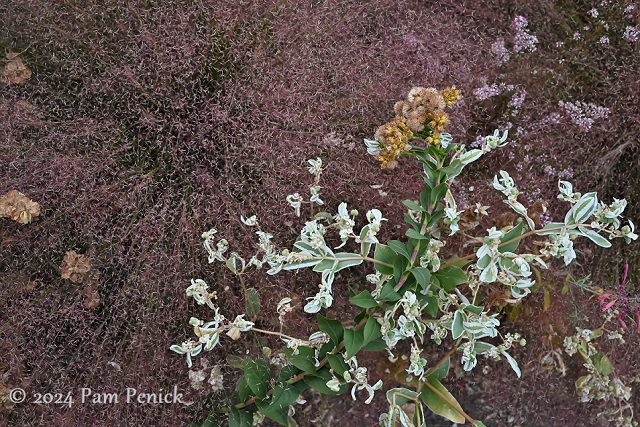
‘Undaunted Ruby’ muhly and snow-on-the-mountain euphorbia
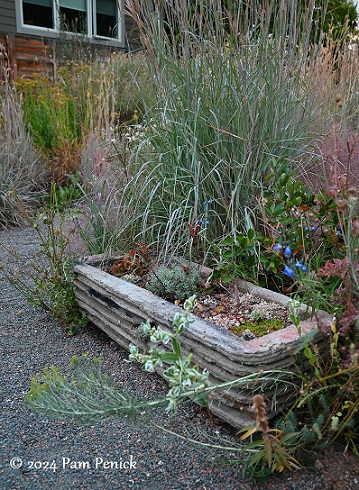
Sandstone-esque hypertufa troughs made by Colorado gardener Domenique Turnbull are planted with succulents that Lisa rescued from imminent tear-down properties in her neighborhood…
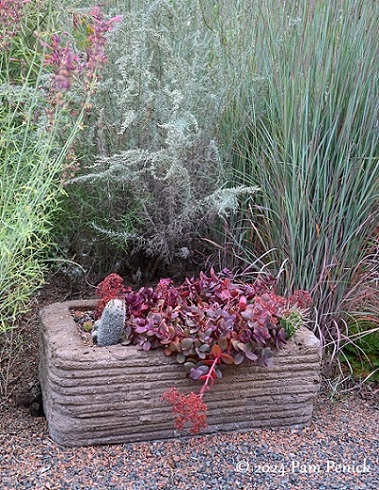
…each one a salute to a now-vanished home and garden.
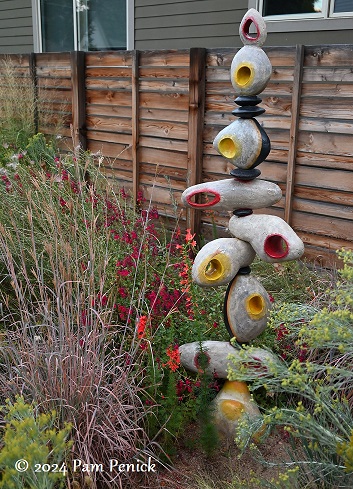
A custom ceramic totem by Rita Vali echoes the colors of nearby plants.
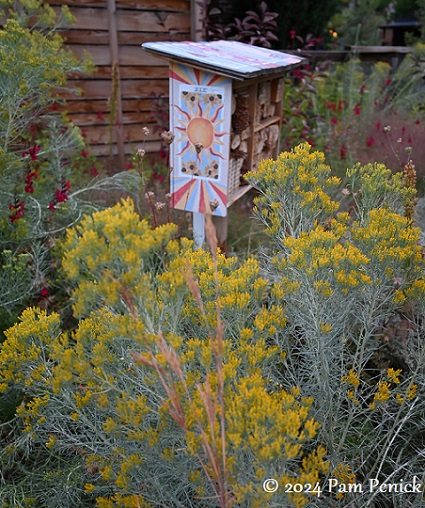
Near a patch of rabbitbrush, a bee condo offers nesting sites for solitary bees and wasps, essential pollinators. A neighborhood teen painted the tarot card design on the box.
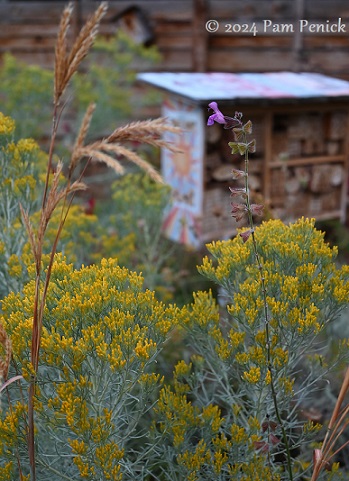
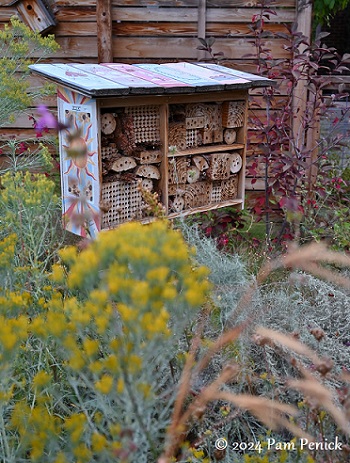
Holes drilled in blocks of wood give solitary bees and wasps, which nest in hollow stems and wood cavities, places to lay their eggs. The larvae hatch inside, feed on the pollen and nectar the mother collected for them, and eventually emerge as adults.
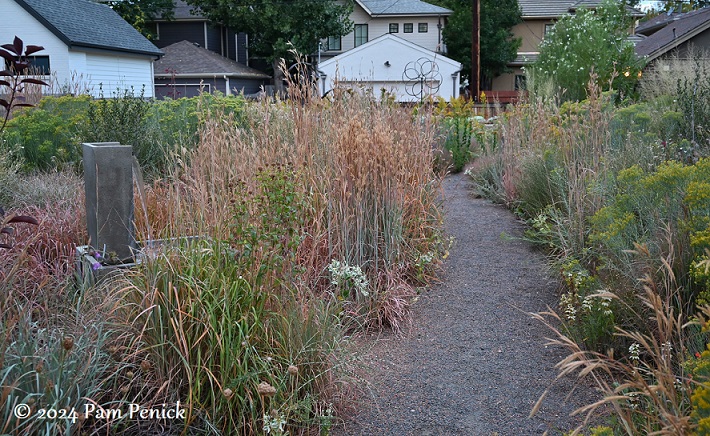
Kevin’s design for the garden, Lisa told me, was inspired by graffiti — specifically by a picture he’d taken in Slovenia of layers of colorful graffiti on a utility box. Using the colors as a spatial guide, he clustered plant species in distinct communities and oversowed it all with seed mixes to create a garden collage greater than the sum of its parts.
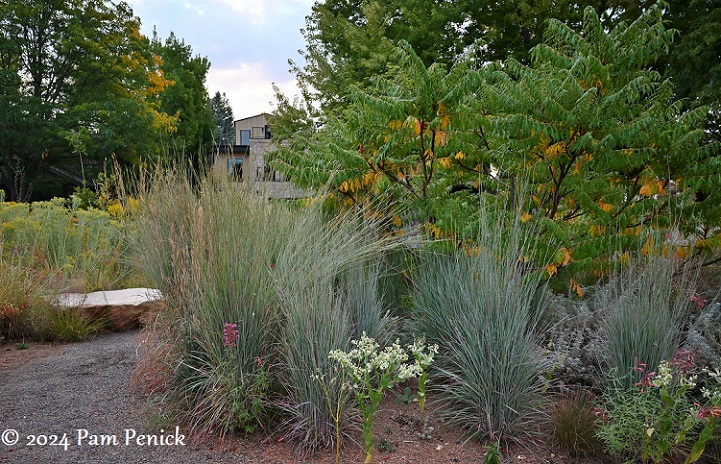
Lisa says most of her neighbors have been supportive of the private-public project. But early on, one neighbor complained to the city, which responded with a cease-and-desist order requiring Lisa to stop allowing public access to the garden. For 8 months, SummerHome’s gate remained shut. But Lisa didn’t give up on her vision.
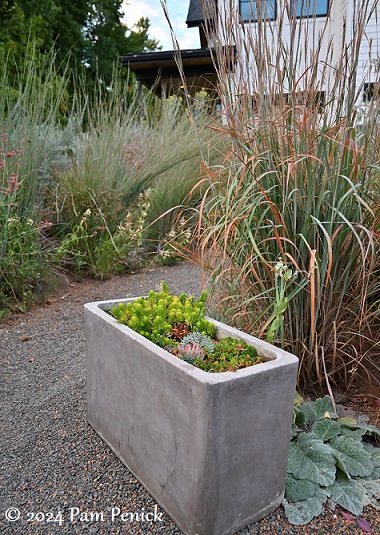
With the help of Kevin and other horticulturists, she put together a 96-page rezoning request that detailed how the garden provides habitat for wildlife and essential green space in an urban environment and offers other benefits. It took multiple re-submissions, but eventually the city approved a rezoning of the property, and SummerHome was allowed to reopen.
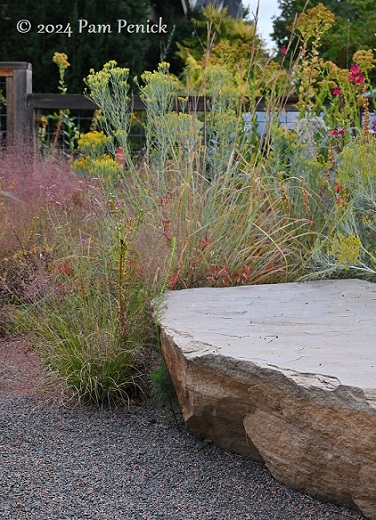
A boulder bench, one of several placed throughout the garden, offers a spot to rest or a perch to view the garden from above.
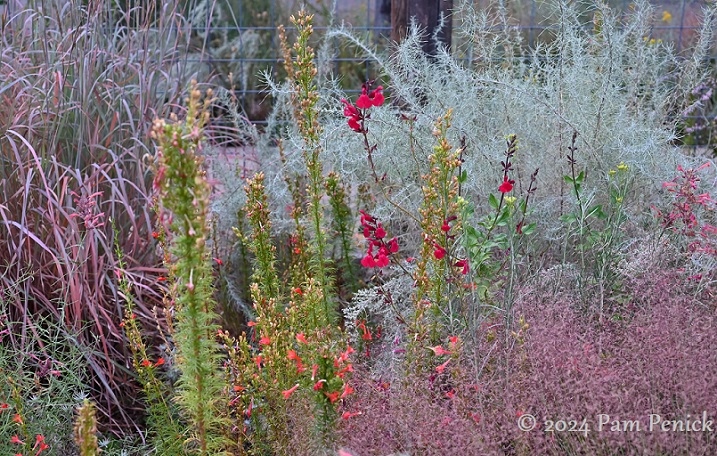
Lisa told me that approximately 20% of her plants are native to the Front Range of Colorado, where she lives. The rest are from steppe regions around the world with climates similar to Denver’s. She eschews rare plants in favor of species readily available at nurseries so that anyone inspired by the garden can go out and find those same plants for their yard.
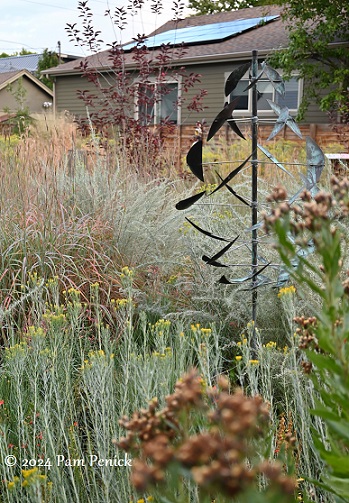
Grasses and a wind sculpture add movement to the garden. That’s Lisa’s house next door.
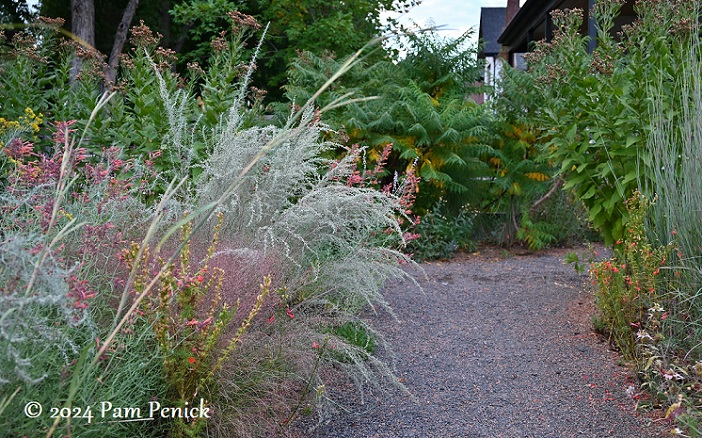
Dense plantings enclose the garden and discourage weeds.
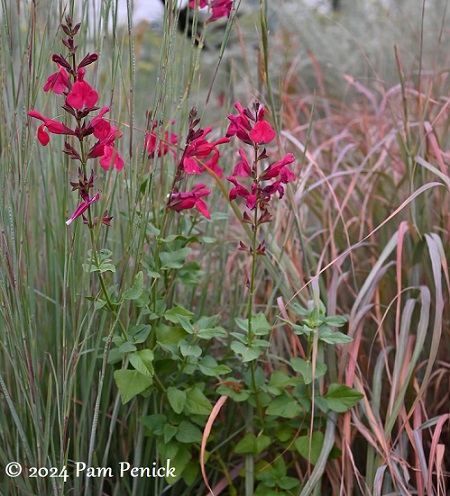
Salvia
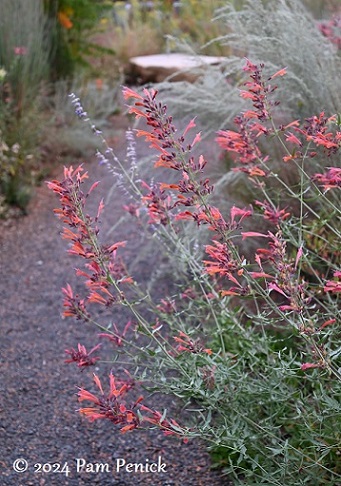
Agastache
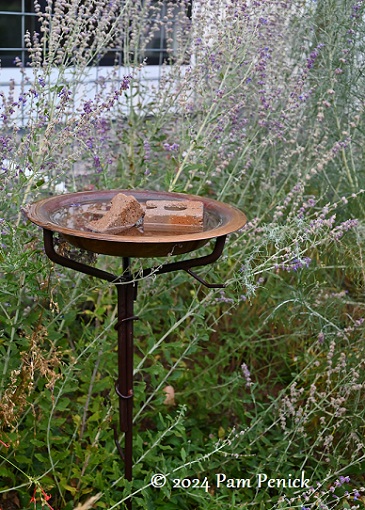
Broken bricks in a copper birdbath give bees and other pollinators a safe place to land for a drink.
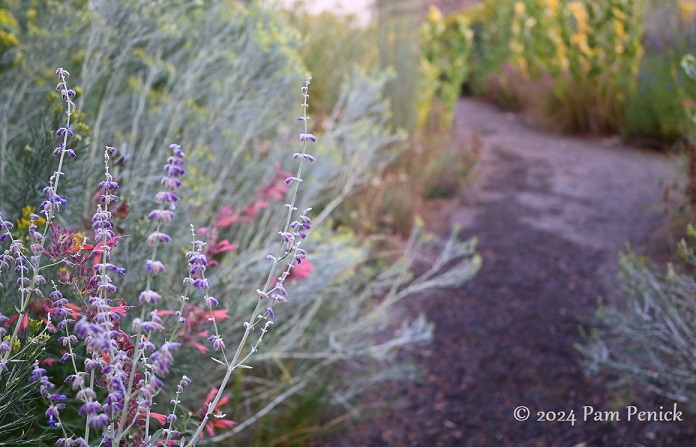
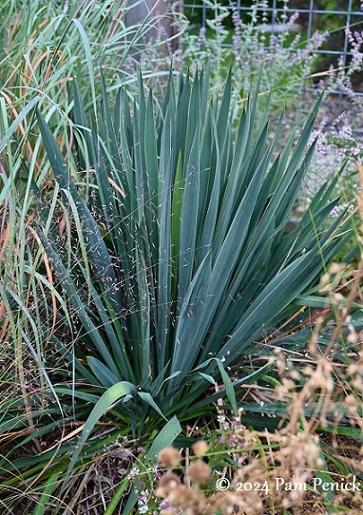
Yucca
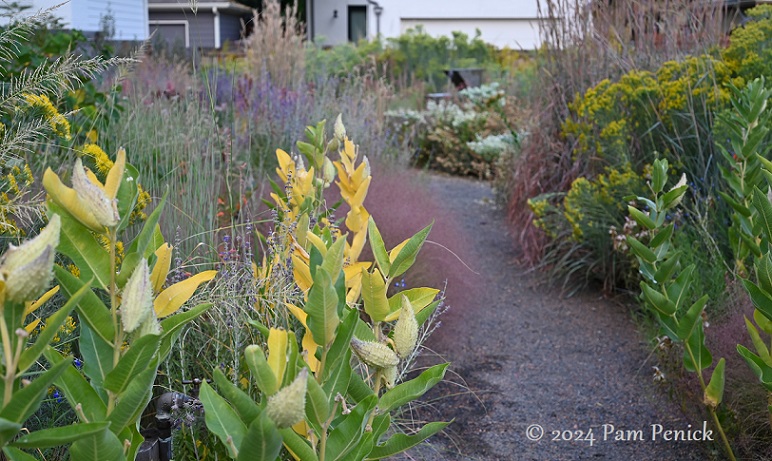
Milkweed
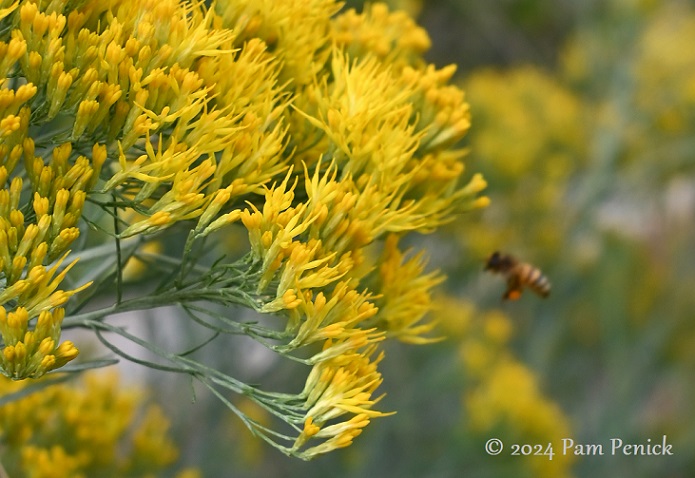
A bee homes in on rabbitbrush flowers.
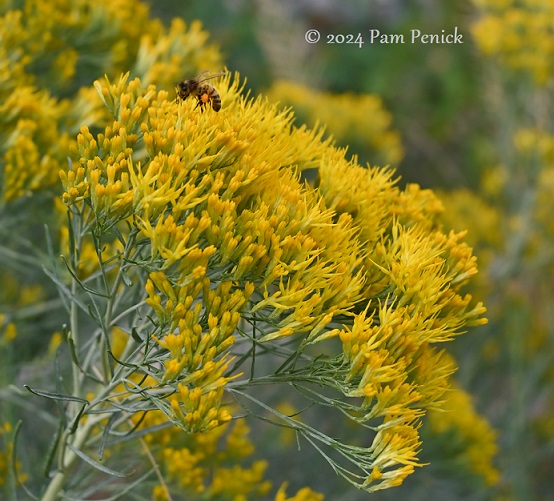
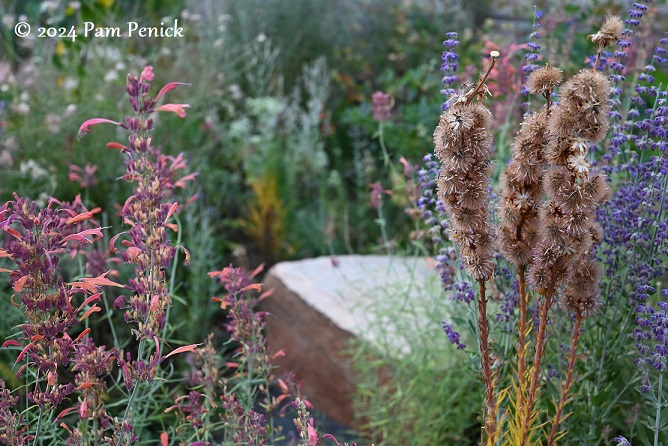
Agastache and liatris seedheads
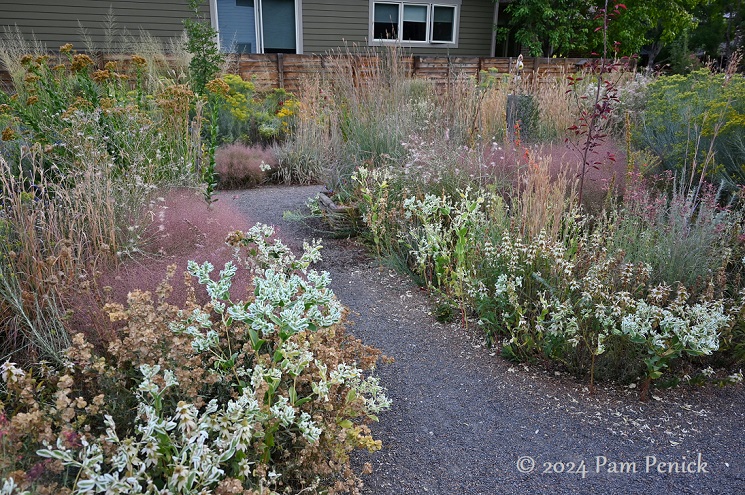
Snow-on-the-mountain euphorbia is pretty with its mint-and-white coloring amid rose, silver, and tawny grasses.
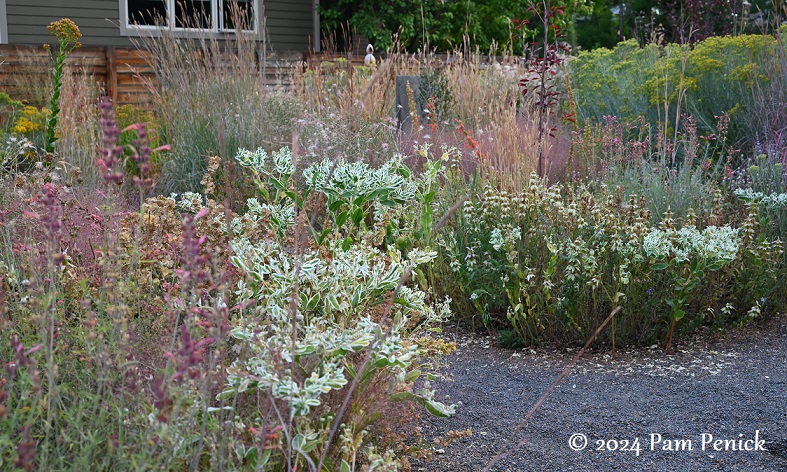
Another view
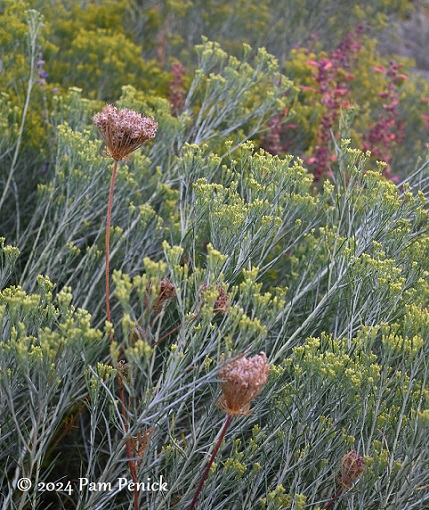
The soft palette of autumn
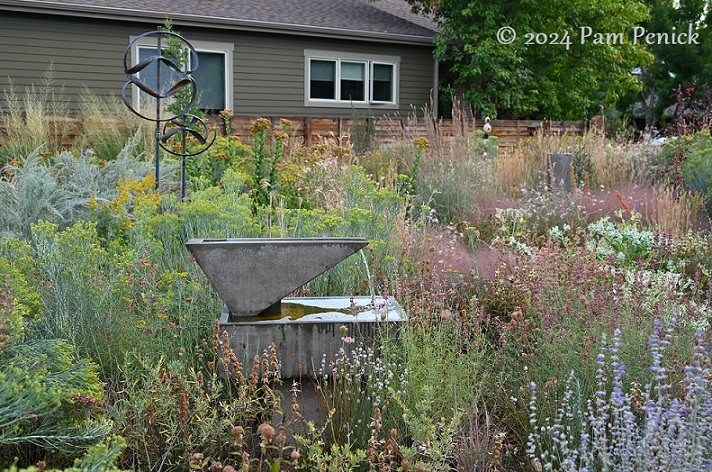
Believe it or not, this is only half of my photos of SummerHome Garden. Stay tuned for Part 2!
Up next: Part 2 of my tour of SummerHome Garden, including its gorgeous crevice garden. For a look back at Lauren Springer’s home garden in Fort Collins, click here.
And get this, Austin: Lisa has agreed to come speak about SummerHome as part of my Garden Spark series on April 10th. More info to come.
I welcome your comments. Please scroll to the end of this post to leave one. If you’re reading in an email, click here to visit Digging and find the comment box at the end of each post. And hey, did someone forward this email to you, and you want to subscribe? Click here to get Digging delivered directly to your inbox!
__________________________
Digging Deeper
Come learn about gardening and design at Garden Spark! I organize in-person talks by inspiring designers, landscape architects, authors, and gardeners a few times a year in Austin. These are limited-attendance events that sell out quickly, so join the Garden Spark email list to be notified in advance; simply click this link and ask to be added.
All material © 2025 by Pam Penick for Digging. Unauthorized reproduction prohibited.


This is such a beautiful and inviting place, which I am sure is gorgeous in every season, and how wonderful for the owner to meet you! Thank you so much for sharing these wonderful views!
Thanks, Lee. I’m glad I was able to meet Lisa and share SummerHome here.
Rabbitbrush, the quintessential southwestern subshrub that every desert garden shouldn’t be without. One of my top favorites. Lisa, Kevin and the volunteers have done an exceptional job. Love the feel, love the vibes, love it all. Wild, colorful, water thrifty. This is what I would want if I lived in Denver area. The bee condo is bee-autiful. The tarot card theme is wonderful too. I am glad she persisted in the face of the one single neighbor that opposed the venture. Don’t give up!
It’s a dream of a garden. I’m glad Lisa persisted too. Thanks for your comment, Jerry.
How inspiring and generous of her. And her persistence to get through the bureaucracy and get the zoning rules changed is impressive!
It is! Not everyone would have had the patience or know-how to get that passed.
Thank you so much for sharing this beautiful, inviting and amazing place, which I am sure is just as perfect in every season. It is a feast for the eyes and senses and the love that was put into it by the owner definitely shows. So glad she stayed strong!
I’m glad you enjoyed the post!
Impressive example of naturalistic planting! Looks quite “wild” yet the human touch is undoubtedly there. Thanks for the tour.
I agree — a wild feel but definitely organized and legible as a garden.
The garden is beautiful, as is the intention behind it. Thanks for sharing with us!
Steve B.
It was my pleasure, Steve. Thanks for commenting.
Such a gift to the neighborhood and community. *There’s always that one complainer! I’m glad she was able to continue with her positive spirit and get the garden opened again for all. It’s wonderful, and I didn’t realize Denver was that dry.
There’s always that one complainer — so true. I’m glad Lisa persisted too.
I’ve been looking forward to this post since you posted a picture on Instagram. Can’t wait for part 2.
Coming soon!
“one neighbor complained to the city, which responded with a cease-and-desist order” What is wrong with people? Such a generous and lovely gift, how could anyone not be thrilled with that little paradise? Kudos to her!!
I’m glad she persevered. It’s an amazing gift to the neighborhood and the city.
April 10 is on my calendar! Lisa’s vision, persistence and resourcefulness are an inspiration.
I’m excited too that Lisa is coming to Austin in April to give a Garden Spark presentation. Should be enlightening!
This is a such an inviting garden. Thinking about a disgruntaled neighbor, there is always one. Can’t wait for part 2.
It’s up now, Lisa. Thanks for reading!
So wonderful. I’m glad she had the fortitude to put together the rezoning request. City bylaws are sometimes calcified and work in favour of troglodyte complainers, to the detriment of nature and all the people inspired by Lisa’s creative, generous act. Kudos to her.
She is clearly a very determined and persistent person. Kudos indeed!